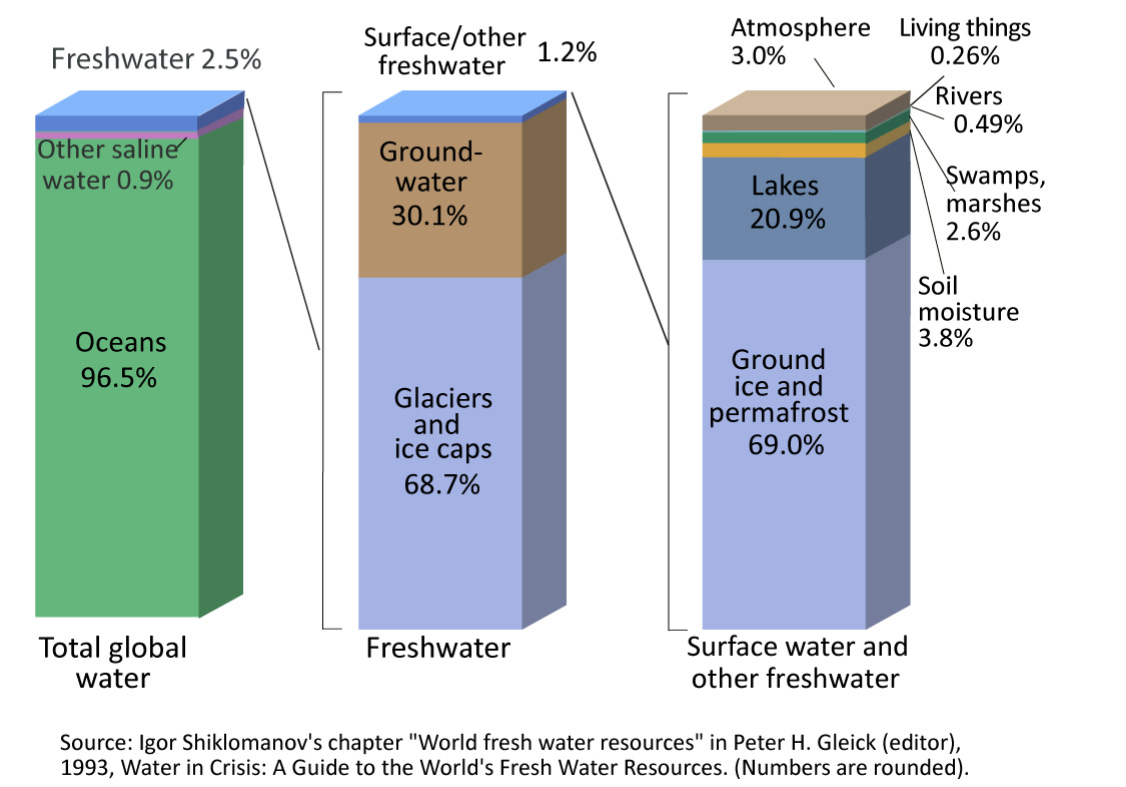Explainer: Climate Change is Making Days Longer – How Could It Disrupt Internet and Navigation?
Hi Friend,
Hope you are doing well,
This Monday, I came across an interesting climate change story. It claims that climate change is making our days longer.
It may sound ludicrous when you first read the headlines but it's backed by science.
The headline goes like this - Climate crisis is making days longer, study finds
I came across two major questions after reading this story -
Is it even possible?
If it is possible then how would it impact our world?
In this post, I am trying to figure out the science behind this study.
So, What does the Study Claim?
Published in Proceedings of the National Academy of Sciences, this study claims -
Modern climate change is unprecedented. In recent decades, it has accelerated the melting of glaciers and polar ice sheets, leading to a rise in sea level. This pole-to-equator mass transport has significantly increased the Earth’s oblateness and length of day (LOD) since 1900.
We show that the present rate of increase is higher than at any point in the 20th century. Under high emission scenarios, the climate-induced LOD rate will continue to increase and may reach a rate that is twice as large as at present, surpassing the impact of lunar tidal friction.
In simpler words, climate change is causing sea level rise which is making our planet bulgier on the equator and flatter on the poles. And, this change in the shape of the earth is increasing the length of our days.
Now, there is a lot to unpack. I will start by answering some basic questions first.
Is the Sea Level Even Rising?

Yes, the sea level is indeed rising. The undeniable proof of this is the retreating glaciers across the world.
Check above mentioned before and after photographs of the Pedersen Glacier in Alaska (USA).
Here’re some more more pictures -


Let me tell you how does the sea level rise.
Water exists in three forms: solid (ice), liquid (water), and gas (vapor).
The water has three forms - solid (ice), liquid, and gas which go from one from to another in this order - Ice > Water > Vapor
So, as our glaciers are melting they are turning into water. And, this additional water is increasing the total amount of water our oceans hold.
Hence, the sea level is rising across the world.
You can reach this conclusion on your own by doing a simple experiment at home.
Just take a bowl and place a solid piece of ice (representing a glacier) on a rock within the bowl.
Fill the bowl with water up to the edge of the rock.
As the ice melts, you will observe that the water level rises, representing how melting land ice contributes to sea level rise.
There are some more pictures on this link which show retreating glaciers across the globe.
And, it’s not just that our polar ice sheet is melting. The mountain glaciers are also taking a huge hit.
The proof of this is the ever-increasing size of glacial lakes across the world.
So, glaciel lakes start forming as mountain glaciers begin to melt. These lakes are not just coming into existance. They are growing at a rapid rate.
And, the ever-increasing size of these lakes simply tells us that our mountain glaciers are melting at a faster rate than ever before.
As per the latest report of the Indian Space Research Organization, every three out of 10 lakes which are larger than 10 hectares have notably expanded since 1984.
These findings are related to lakes that are situated in the Indian Himalayas.
Take the example of Ghepan Ghat glacial lake in Himachal Pradesh. It is situated in Indus river basin at an elevation of 4,068 metres.
In 1984, this lake was not even equal to the size of Vatican City. Now, more than two Vatican cities can be in it.
How can additional seawater change the Earth’s shape?
Our planet Earth is not flat…we all know that but it is not perfectly spherical either.
It’s like an ellipsoid, flatter on the poles and bulgier on the equator. That’s not it. The shape of it keeps changing as per its proximity to the Sun & Moon.
Now, you may ask - why does this happen? Well, it’s because of our seawater and gravity.
As the Sun or Moon inches closer to the Earth, their gravitational pull attracts the mass of it towards them. It is also known as Tidal force.
Water being liquid is more elastic than hard surfaces of the earth so the Moon and Sun pull it towards them.
The redistribution of mass from the poles to the equator creates the shape of the earth like an ellipsoid.
Because of this reason, we have high tides and low tides.
Now, if the polar ice and the mountain glaciers melt over time then it would simply enhance the total amount of water our oceans hold.
This would in turn make the earth bulgier on the equator and flatter on the poles as there would be more water to be pulled towards the moon.
In the beginning of this newsletter, I shared two questions that came to my mind while reading the reports on this study.
First question was - Is it even possible?
The answer to my first question is - Yes…it is indeed possible; climate can change the shape of our planet.
The second question was - If it is possible then how would it impact our world?
You can find the answer to this question in coming paragraphs.
How does It Make Our Days Longer?

This is the final piece of our puzzle. So far, we have zeroed in on how additional sea water can change the shape of the earth by making it bulgier on the equator and flatter on the poles.
We still need to figure out the reason why this change in Earth’s shape would increase the length of our days.
It’s not very difficult to understand. The duration of a single day depends on one rotation of earth on its axis which it completes in about 24 hours.
23 hours, 56 minutes, and 4 seconds to be exact.
Now, as the earth gets bulgier on the equator the rotation time would increase with the increasing moment of inertia.
The law of conservation of angular momentum says if the moment of inertia increases, the angular velocity must decrease to compensate.
If it is difficult to wrap your head around this then you can try an experiment at home to see this in action.
Sit in a chair that spins easily, like an office chair. When you spin with your arms close to your body, you'll notice you spin faster than when your arms are stretched out wide.
This happens because when your arms are close, your weight is more centred and you can spin faster.
But when your arms are out wide, your weight is spread out more, making you spin slower.
This explains why the slight redistribution of Earth's mass from the poles to the equator would contribute to a decrease in its rotational speed over time.
How Huge this Change Be?

Well, it won’t be much. It is already happening on a geological time scale. Climate change is only accelerating it.
As per this study, the rate of slowing is varying between 0.3 and 1.0 milliseconds per century (ms/cy) between 1900 and 2000. But since 2000, as the melting has accelerated, the rate of change has gone up to 1.3ms/cy.
The researchers associated with this study have said -
“This present-day rate is likely higher than at any time in the past few thousand years…It is projected to remain approximately at a level of 1.0 ms/cy for the next few decades, even if greenhouse gas emissions are severely curbed….If emissions are not cut, the slowing rate will increase to 2.6 ms/cy by 2100, overtaking lunar tides as the single biggest contributor to long-term variations in the length of days.”
But if it won’t be much then why did I write this explainer? You may have this question.
Well, the researcher associated with this study Benedikt Soja has answered this question beautifully -
All the data centres that run the internet, communications and financial transactions are based on precise timing. We also need a precise knowledge of time for navigation, particularly for satellites and spacecraft.
As the researcher explained, the precise calculation of time is the bedrock of our modern society.
Our time is tied to the earth’s rotation on its axis. So, if the rotation time changes - even by a fraction of a second - then it may disrupt the way our world functions.
For example, our virtual world can function properly because of real-time communication between its data centres spread across the world.
This real-time communication is possible because these machines are synchronized to precise timing standards like coordinated universal time.
If these data centers go out of synchronization then even smaller activities of our virtual world like reading this explainer on your phone will be impacted.
Supplimentary Readings
Easter Island Is Eroding - NYT
‘This Storm Has Broken People’: After Beryl, Some Consider Leaving - NYT
Climate crisis has shifted the Earth’s axis, study shows - Guardian
Climate emissions shrinking the stratosphere, scientists reveal - Guardian





